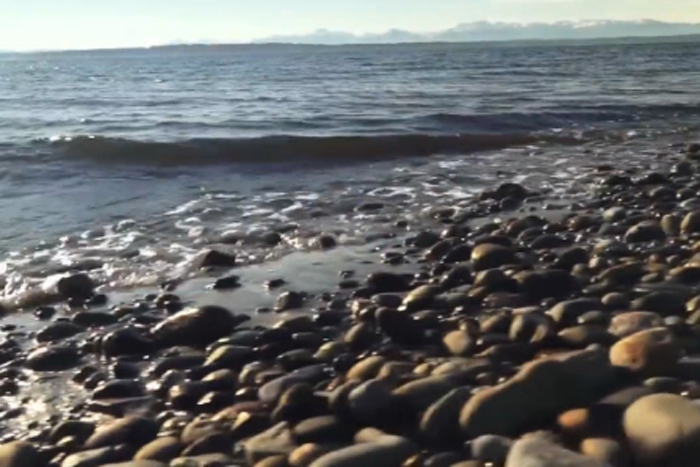
Beyond Shellfish, Ocean Acidification is Bad for People (Op-Ed)

Lisa Suatoni is a senior scientist in the Oceans Program at NRDC. This Op-Ed was adapted from a post to the NRDC blog Switchboard. Suatoni contributed this article to LiveScience's Expert Voices: Op-Ed & Insights.
There's a predictable arc to many environmental debates.
Step 1: Scientists observe a change in the natural world due to human activity. Step 2: A discussion ensues about what this change might mean for the natural world. Will it challenge the prosperity, or even the survival, of this or that species of plant or animal? This phase of the debate is well underway before we finally arrive at Step 3. Step 3: What does this observed change mean for people?That last one is usually the prerequisite for corrective action.
The climate change debate is finally arriving at this third stage, with unsettling predictions about populations displaced by sea-level rise, drought and storm damage, etc. But when it comes to "the other carbon problem," ocean acidification, the discussion remains stuck between steps 1 and 2.
So let's just cut to the chase: As with most major environmental disturbances (or upheavals), ocean acidification is, and will be, bad for people too.
To recap, about a quarter of the carbon dioxide people put into the atmosphere by burning fossil fuels is absorbed by the ocean, where it forms carbonic acid. The more fossil fuels people burn, the more we change the pH, and 'acidify' the ocean. Geochemists are fairly certain that at the current fossil-fuel burn rate, ocean acidity will double compared to preindustrial times by the turn of the century.
That's likely to be a big problem for many marine life forms, particularly those that live in shells, such as corals, crabs and oysters. Animals that depend on these creatures for food are also at risk. Which, in turn (here's Step 3), means it's a big problem for us. The ocean, after all, is a vital food source for people on earth; a source that over 1 billion people depend on every day for their protein.
Sign up for the Live Science daily newsletter now
Get the world’s most fascinating discoveries delivered straight to your inbox.
The human impacts of rising ocean acidity have already begun. Consider oyster farmers in the Pacific Northwest, who have seen over 90 percent of their oyster "spat" (their term for baby oysters) die off when corrosive waters upwell from the deep Pacific onto the continental shelf. In the past several years, hatcheries in Oregon and Washington have been struggling to adapt, shutting off ocean water-valves whenever pH plunges. Within 50 years, however, the waters of the Pacific Northwest may be corrosive year-round. [Oyster Farmers Under Threat From Ocean Acidification (Video)]
Forgive the metaphor, but oyster larvae are canaries in the coal mine. And so, therefore, are oyster farmers. How much longer will they be able to adapt to rising acidity in vulnerable regions like the Pacific Northwest? No one knows.
Alaskan king crab may be next. They have shown sensitivity to lower pH, and pockets of acidic water are beginning to show up in their habitats. Alaskan-king-crab fisherman expressed anger recently when they were docked (literally) by the government shutdown, which made crabbing permits unavailable for a few days. Imagine their pain if the crab populations that their livelihood is based upon begin to dwindle from rising acidity and ocean temperature.
In New Bedford, Mass., upward of 80 percent of fishing revenues come from sea scallops, another shelled organism that may be threatened by increasingly corrosive waters. Worldwide, nearly a quarter of all marine species live in tropical coral reefs, which are disappearing as a result of carbon dioxide pollution and local stressors. What happens to these species when their habitat is gone? And what happens to the millions of people who depend on them for food and income?

To avert disaster, the first thing people need is more information to form a clearer understanding of the profound changes that are taking place.
That means building the global scientific network to monitor changes in the ocean's vital signs: pH, temperature and dissolved oxygen. The effort can start with a bare bones network in the most vulnerable sites like the Pacific Northwest of the U.S., the sub-Arctic, and the coral triangle. Carefully designed research at these sites will help local communities understand what is at risk and how best to mitigate the harm.
Scientists know that climate change has a long, built-in, lag time, which means it will keep getting worse for decades even as people reduce carbon emissions. But ocean acidification is different. Cutting carbon dioxide emissions will very quickly slow changes to ocean pH. That fact should give people some hope.
No one wants fishing communities and economies to see their way of life disappear. The faster people understand how ocean acidification poses a threat to that way of life, the better our chance of protecting it.
This Op-Ed was adapted from a post to the NRDC blog Switchboard. The views expressed are those of the author and do not necessarily reflect the views of the publisher. This version of the article was originally published on LiveScience.









